In the animal kingdom, there are still many strange phenomena that we cannot explain scientifically.
Animals with Behaviors That Seem Non-Existent
1. Meerkat
Unlike other animals, the Meerkat (Suricata suricatta) lives in the desert, forming large groups and exhibiting highly organized and cooperative behavior. Meerkats typically live in groups of 20-30 members. They show mutual care by having one or more individuals stand guard while others forage for food, alerting them to danger. The sentry will continuously call out to warn those in the burrow, only stopping once the predator has left.
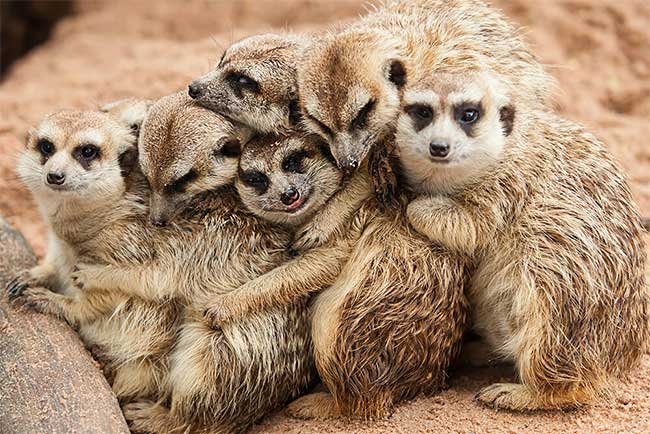
Meerkats teach their young in a unique way. (Photo: Pixabay)
The Meerkat group also knows how to take turns watching over the young. Adult Meerkats are responsible for looking after and protecting the young from dangers they may cause themselves due to their lack of instincts. They teach the young in a very specific way. For instance, the Meerkat parents will bring near-dead scorpions back to the burrow to teach their offspring how to hunt.
They continuously bring larger and healthier scorpions for the young to practice with until they improve. This way, the young Meerkats learn how to hunt proficiently and how to remove the venom from scorpions before being allowed to hunt freely.
2. Gray Crane in Elk Grove
According to scientists, in the animal kingdom, only 5% of species have monogamous relationships similar to humans. The Gray Crane in Elk Grove, California, is one of the animals in this 5% group. Gray Cranes are always seen in pairs.
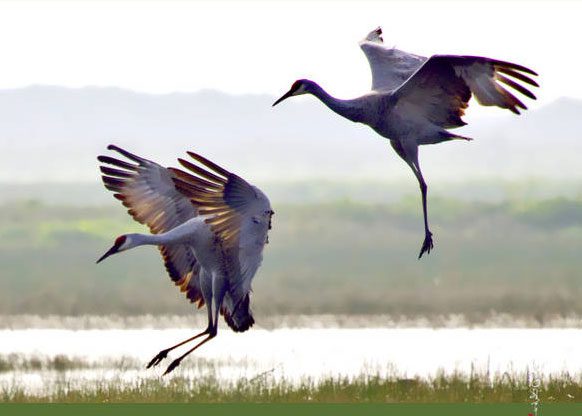
The Gray Crane in Elk Grove has a monogamous relationship like humans. (Photo: Pixabay)
Upon reaching maturity, around the age of 4, Gray Cranes form lifelong partnerships. They never change partners. A monogamous pair lives together until death, which averages around 30 years. Their reproductive rate is very low, with each family producing a maximum of 2 offspring. Their children and grandchildren live together with their parents and grandparents, forming a household that can include up to 20 members.
3. Prairie Dog
The Prairie Dog, also known as the dog squirrel or prairie marmot, is a rodent native to North America. Prairie Dogs are highly social animals, often living in large colonies or forming a “town.” Family groups of Prairie Dogs are the basic units of their society. Members of a family group inhabit the same territory, interacting through vocal communication or grooming and “kissing.” They do not engage in these behaviors with Prairie Dogs from other family groups.
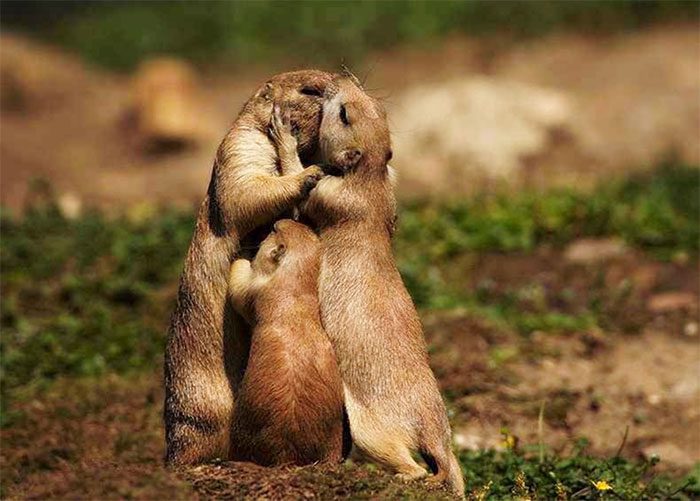
Prairie Dogs communicate with family members through hugs and kisses. (Photo: Pixabay)
Prairie Dogs establish their own territories, marked carefully with physical barriers like rocks and vegetation. Males are responsible for protecting their territory, displaying aggressive behavior towards males from other families that encroach on their land. Such interactions can occur up to 20 times a day and last about five minutes. When two Prairie Dogs meet at the territory’s edge, they begin by staring each other down, performing mock displays, fluffing their tails, grinding their teeth, and sniffing each other’s scent glands. During fights, Prairie Dogs will bite, kick, and shove each other. If the opponent is of equal or smaller size, females will join the fight; otherwise, they signal the males when they see a larger opponent.
4. Chimpanzee
Chimpanzees are closely related to humans, living in West and Central Africa. They also live in small groups of 15 to 150 members. Their lives are organized into a strict hierarchy dominated by males. A notable feature of chimpanzee populations is their ability to skillfully use tools for their survival. Chimpanzees have been known to use stones, grass, and leaves to create tools for harvesting honey, nuts, catching termites, and holding water. They can even sharpen sticks to make spears for hunting prey in high branches.
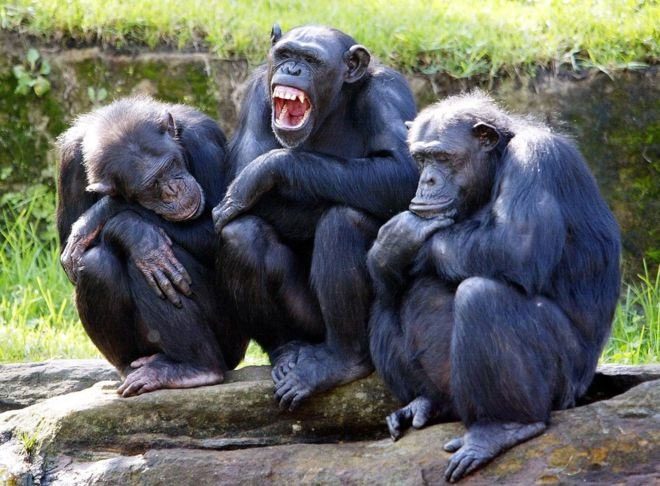
Chimpanzees can use stones, grass, and leaves to create tools that assist them in hunting and foraging. (Photo: Pixabay)
Additionally, a study published in 2022 revealed that chimpanzees living in rainforests actively dig wells in the ground to find drinking water. According to the research team, this digging behavior originated from a single individual and then spread among the group members. They observed a young female chimpanzee in the Waibira rainforest continuously digging wells in stagnant water. They drank directly from the wells and soaked up water using tools made from leaves, moss, or a combination of both. This behavior is quite rare, so scientists were surprised to witness it.
5. Ants
Ants are capable of farming and keeping pets just like humans. According to scientists, ants are highly adaptable to various environments, having existed on Earth for approximately 480 million years. Throughout this time, they have evolved to inhabit every nook and cranny, capable of flying, digging burrows, and even swimming. Among them, the organization of ant and termite colonies is considered most similar to human civilization.
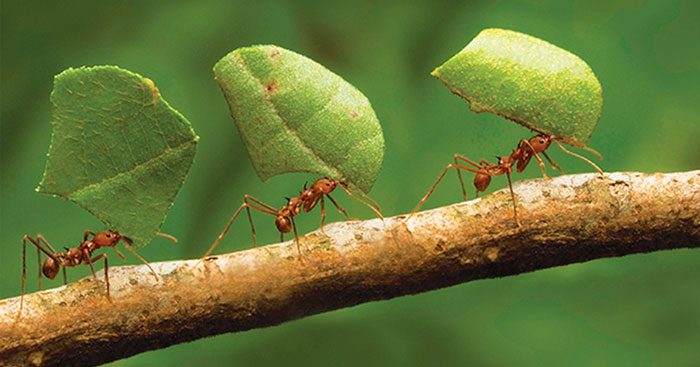
Ants have been cultivating fungi for 25 million years. (Photo: Pixabay)
According to the Independent, research conducted by the Smithsonian Tropical Research Institute shows that about 25 million years ago, ants began cultivating fungi to harvest protein-rich seeds for food. They often cut leaves into small pieces and bring them underground to grow fungi. This is because the type of fungus ants cultivate cannot produce enzymes to digest wood, so they can only absorb nutrients from the leaves that the ants bring back.
Additionally, aphids produce a sugary substance that ants enjoy, so they occasionally bring a few aphids back to their nests as pets.





















































